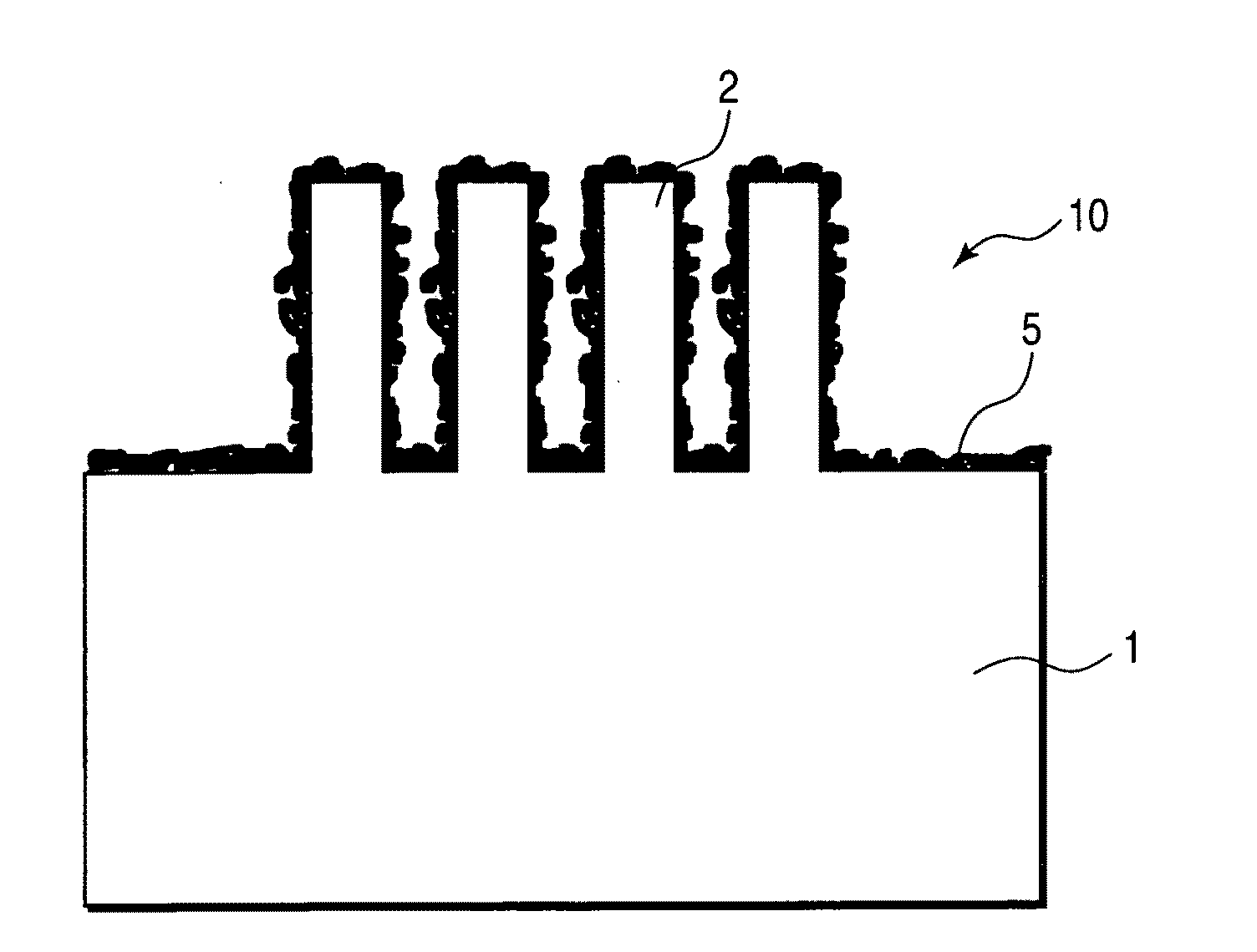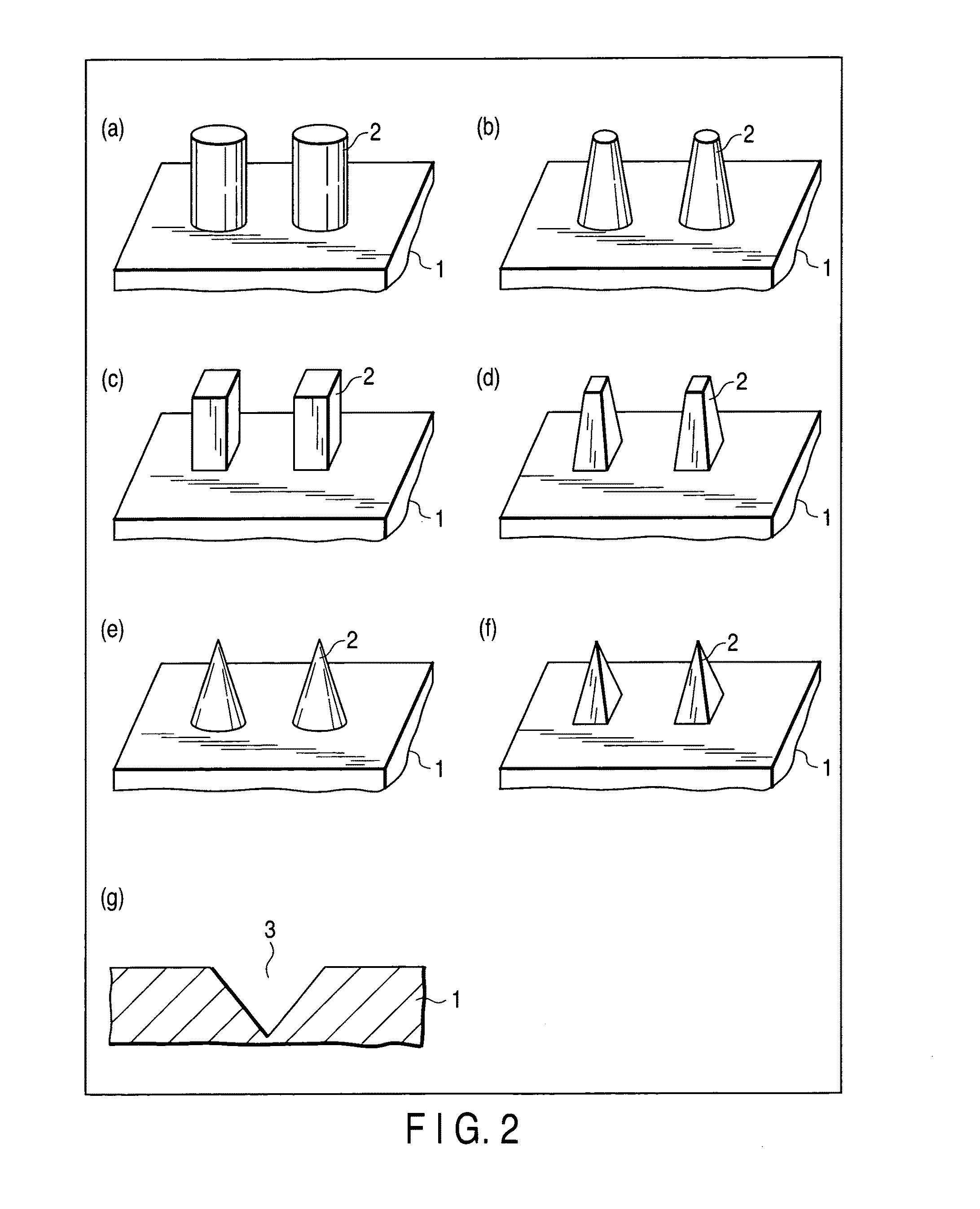Nanocarbon material-composite substrate and manufacturing method thereof
a technology of nano-carbon materials and composite substrates, which is applied in the direction of luminescent compositions, transportation and packaging, coatings, etc., can solve the problems of difficult control of the particle diameter or chemical state of metals to be used as catalysts, low carbon nanotube yield, and difficult to achieve uniform thickness and configuration of carbon nanotubes to be created, etc., to achieve easy formation of nano-carbon materials, high aspect ratio, and large surface area
- Summary
- Abstract
- Description
- Claims
- Application Information
AI Technical Summary
Benefits of technology
Problems solved by technology
Method used
Image
Examples
example
[0066]Followings are explanation of specific examples of the present invention.
[0067]Mechanical cutting work or chemical etching was applied to the surface of an n-type monocrystalline silicon (100) substrate of low electrical resistance, thereby forming projected portions of square columns or square pyramids on the surface of the substrate.
[0068]Then, by means of sputtering, cobalt employed as a catalyst was deposited to a thickness of 6 nm on the surface of the substrate and the deposited layer was subjected to heat treatment for 10 minutes in air atmosphere at a temperature of 900° C.
[0069]The resultant substrate was immersed in methanol and an electric current was passed through electrodes to the substrate so as to heat the substrate for three minutes at 600° C. at first and then to heat the substrate for 6 minutes at 900° C. As a result, a solid / liquid interface contact decomposition reaction using carbon atoms in the methanol as a raw material was produced in the vicinity of t...
PUM
| Property | Measurement | Unit |
|---|---|---|
| height | aaaaa | aaaaa |
| length | aaaaa | aaaaa |
| thickness | aaaaa | aaaaa |
Abstract
Description
Claims
Application Information
 Login to View More
Login to View More - R&D
- Intellectual Property
- Life Sciences
- Materials
- Tech Scout
- Unparalleled Data Quality
- Higher Quality Content
- 60% Fewer Hallucinations
Browse by: Latest US Patents, China's latest patents, Technical Efficacy Thesaurus, Application Domain, Technology Topic, Popular Technical Reports.
© 2025 PatSnap. All rights reserved.Legal|Privacy policy|Modern Slavery Act Transparency Statement|Sitemap|About US| Contact US: help@patsnap.com



